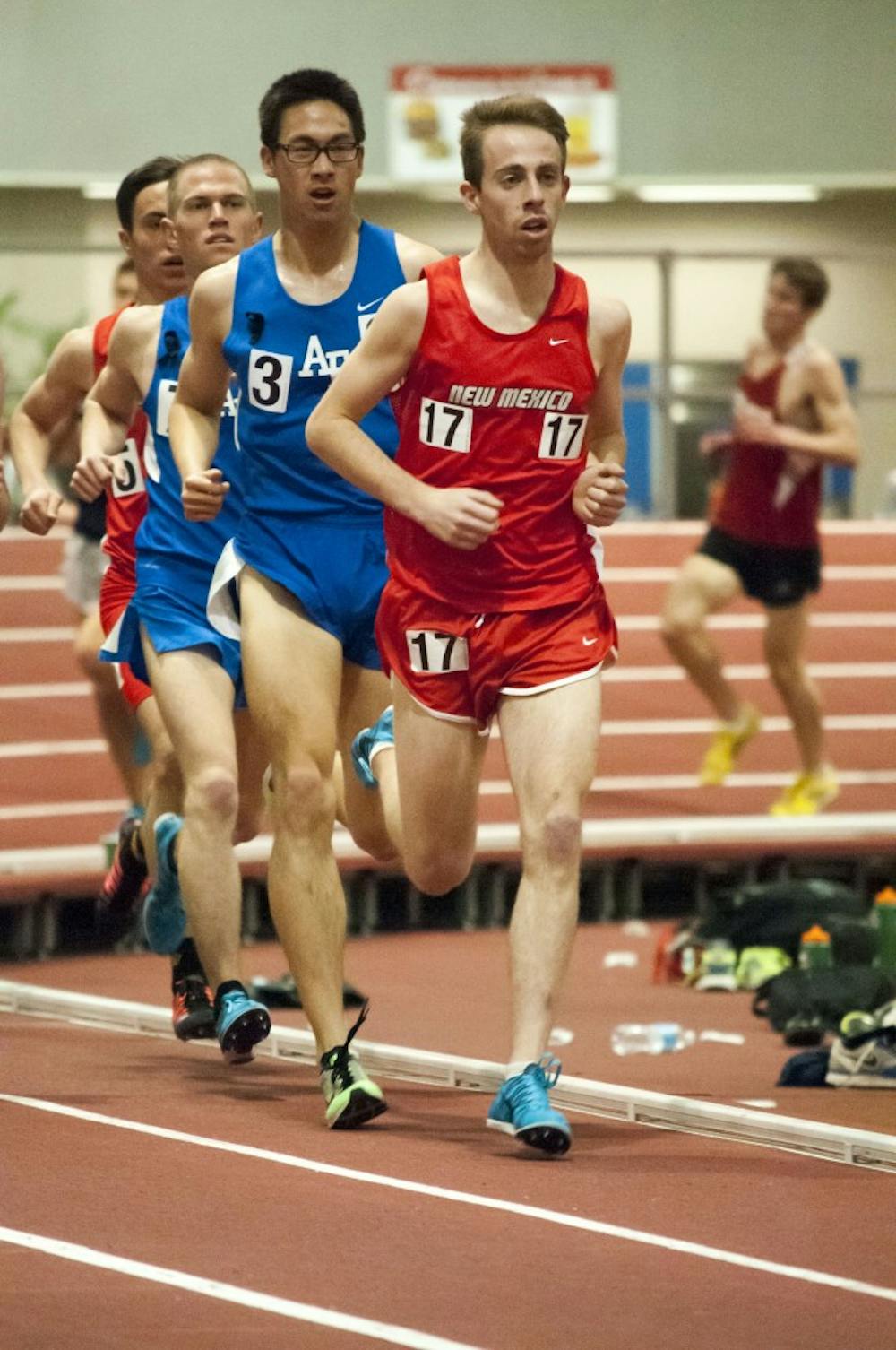assistantsports@dailylobo.com @JROppenheim
Albuquerque’s indoor track facility provided a significant economic boom for the city over a roughly two-month span.
Seven indoor track and field meets held at the downtown convention center generated a total of $1.8 million in direct spending, a figure that tracks new dollars brought into and circulated within a city, according to information from the Albuquerque Convention and Visitor’s Bureau,.
The NCAA indoor championships, held March 14-15 in Albuquerque, brought in nearly $998,000 in direct spending, according to the ACVB data. The NCAA event had 672 athletes in attendance from various schools across the country.
This year marked the first time Albuquerque has hosted the event. Sites for the track championships go through a bidding process and can host once every four years, meaning Albuquerque may not host the NCAAs again until 2019 at the earliest.
University of New Mexico head coach Joe Franklin and Senior Associate Athletic Director Kurt Esser called the national championship event a success from both a competitive standpoint and an economic one.
“It was a great showcase for Albuquerque, UNM and New Mexico,” Franklin said. “People from across the world got to see it, and it’s all about name recognition for our University, state and city.”
The track helps fill a void at the convention center during a time of year that doesn’t see as much convention traffic, said Dan Ballou, sports marketing director for the convention and visitors bureau.
The prime time for conventions typically runs from April to November, Ballou said. The indoor track season, both in collegiate and professional sports, goes from mid-January to the end of March, which provides an avenue to host events in the year’s first three months.
Track meets bring weekend business to hotels in the downtown area, he said, while most business travel takes place Mondays through Fridays, with less business happening Saturday and Sunday.
“Very few downtowns in the country — in the world — have a lot of travel on weekends because they’re designed more for the business traveler and convention-goers,” Ballou said. “Those are more Monday through Friday-type things. Sporting events are more weekend business, so they fill a need.”
Another benefit, Ballou said, is events like the USA Track and Field Indoor Championships and the NCAAs generate exposure because news of the meets is broadcast online.
Get content from The Daily Lobo delivered to your inbox
The city and the University have a good relationship when it comes to sharing the track, Esser said. While the city owns the meets, UNM coaches and staff run its own regular-season meets. The school does not pay a fee to the city to use the facility at the downtown convention center, and both sides work together to host as many meets as possible, he said.
The Lobos hosted five events of their own, meaning they did not have to travel for early-season competition. Franklin said there aren’t many facilities in this region of the country; most indoor tracks are located in the Midwest and back East because of the heavy snow in the winter.
Other Western and Southwestern states that have indoor tracks include Washington, Idaho, Montana and Texas, Franklin said. The Lone Star State has two — one at Texas A&M and one in Houston.
Staying at home provides a significant savings for UNM in terms of travel costs. Esser estimates the team would spend roughly $70,000 to $100,000 if it had to travel over those five weekends.
“It is one of those hidden gems, in my opinion,” Esser said. “We don’t pay anything to the city for these meets and we work together as much as we can to host as many as we can.”
The city spent $500,000 for the indoor track in 2005 through the use of general obligations bonds from taxpayers. Albuquerque had not hosted an indoor track meet since 1987, the UNM athletic department website states.
Brad Winter, an Albuquerque city councilor and himself a track and field athlete, helped in acquiring the new track. He said it would have cost the city roughly $1.2 million.
“I’m very proud of it,” Winter said. “It’s also about the economic impact it’s had for Albuquerque. This year’s meet is a good example.”
What is direct spending?
Albuquerque Convention and Visitor’s Bureau Sports Marketing Director Dan Ballou called ‘direct spending’ a conservative and realistic number to determine how many new dollars come into a city from a particular event.
Based on a formula approved by Destination Marketing Association International, Ballou said the ‘direct spending’ considers those new dollars brought in and exchanged within the local economy. He said those dollars are typically exchanged seven times before leaving the city.
“You buy your ticket, and part of that money goes to the person who sold you the ticket,” Ballou said. “The person that sold you the ticket may be hungry when he leaves and goes to Subway and gets a sandwich, which in turns pays that Subway worker, who then needs gas for his car. Or the Subway owner needs to buy a new oven — ‘I can’t get that oven here. I have to go to Phoenix and get it’ — so that dollar leaves.”
Here is a list of the seven indoor track and field meets Albuquerque hosted this year and the ‘direct spending’ associated with them, according to information from the ACVB:
- Jan 18, Lobo Collegiate Invite: $27,000
- Jan. 24-25, Cherry & Silver Invite: $136,480
- Feb. 1, New Mexico Team Invite: $88,675
- Feb. 7-8, New Mexico Classic: $120,300
- Feb. 14-15, Don Kirby Elite Invite: $113,700
- Feb. 21-23, USA Indoor Championships: $378,000
- March 14-15, NCAAA Indoor Championships: $997,800






